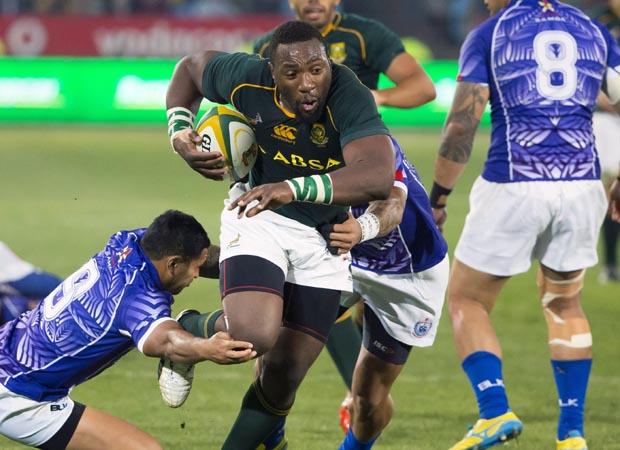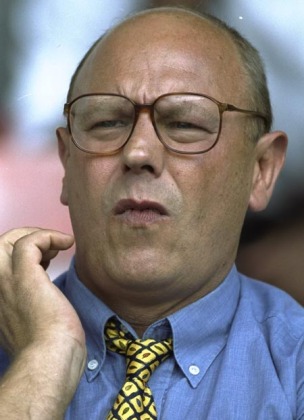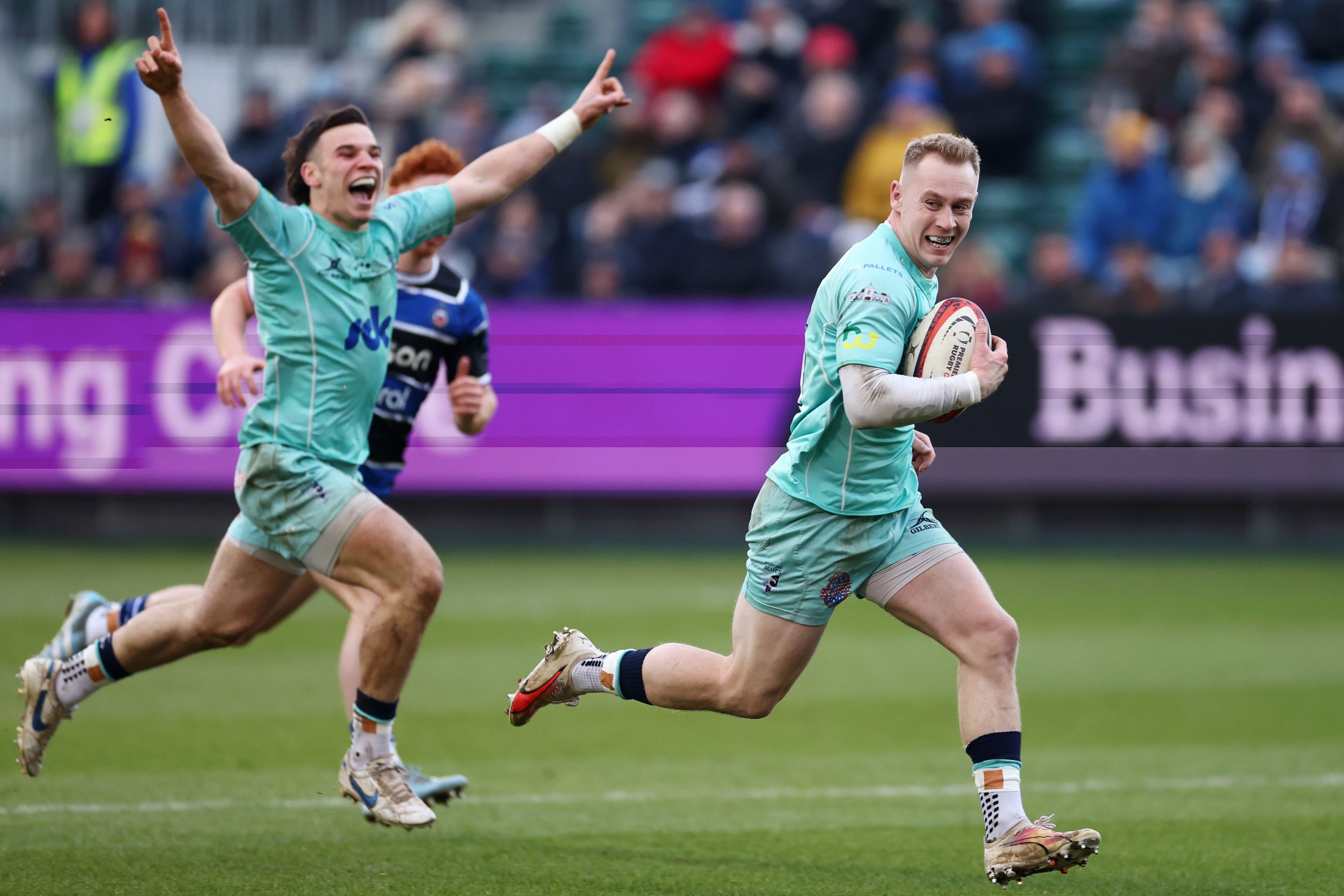
 Dick Best says that South Africa, the big beasts of the world game, are on the hunt. He says that Springbok coach Heyneke Meyer’s side will be intent on mauling England this weekend and sustaining the momentum to kill off New Zealand‘s ambition to become the first nation to win back-to-back World Cup titles in 2015.
Dick Best says that South Africa, the big beasts of the world game, are on the hunt. He says that Springbok coach Heyneke Meyer’s side will be intent on mauling England this weekend and sustaining the momentum to kill off New Zealand‘s ambition to become the first nation to win back-to-back World Cup titles in 2015.
The 1992 England Grand Slam and 1993 Lions coach takes a keen interest in the South African game having briefly coached Western Province, even attending night-school classes in Afrikaans in Cape Town so he could communicate better with the players.
Since Stuart Lancaster took over as England coach his success at shooting down the Springboks has been as limited as his immediate predecessors, and Best says that after their recent 26-25 victory over the All Blacks in Johannesburg a first win, even at Twickenham, will be hard to come by.
Best, who won 13 of his 17 Tests as Red Rose coach – including a 33-16 home win over the Boks – says that there are good reasons why South Africa have become England’s bogey team, with the long wait for a victory over them stretching back to 2006. In the intervening eight years the Springboks have won 10 times with England’s only sight of parity the drawn Test in Port Elizabeth in 2012.
There have been four defeats on Lancaster’s watch, and while South Africa may not be the world champions, they undoubtedly believe that they are world-champions-in-waiting according to Best. He says that their win at Ellis Park over the All Blacks underlines that their desire to be number one is never less than burning.
Best says that they also have an impressive coaching brains trust, led by Meyer, but with an outstanding right-hand man in his Belfast-born English-raised assistant coach John McFarland.
Best goes back a long way with McFarland, and he outlines why the former Saracens hooker, who has worked with Meyer at the Blue Bulls and now with the Springboks, has been so important to the South African cause. “He worked with me at London Irish back in the late 1990s, and he has this great ability to suss where the opposition are vulnerable.”

John McFarland (l) and Heyneke Meyer (r)
Best says that the stereotype of the South Africans being little more than big, fit, unimaginative Boer bruisers is way off the mark. “Meyer has been with the core of this team for years because so many of them have links to his time in Pretoria with the Blue Bulls. The interesting thing is his long partnership with McFarland, who happens to be one of the best analysts in the game.”
His view is that Meyer and McFarland make a formidable coaching team, evidenced by the way the Springbok game evolved during the Rugby Championship, marrying their traditional physicality to a desire to counter-attack from deep off turn-overs and also stretch defences out wide.
Best says a coach like Meyer never forgets the essential building blocks.
“Meyer is smart. He knows that you need 800 caps to win a World Cup, and it explains why he’s gone back to old warhorses in the second row like Victor Matfield (below right) and Bakkies Botha. They have a real hardened look to them in the tight-five, just like England did in 1991 and 2003.”
Best adds: “All World Cup-winning teams have very good, experienced tight-fives. They also have world-class 9s and 10s, good back-rows and at least 80 per cent goalkickers – and that’s the sort of team Meyer is building.”
Best contends that Lancaster and his analysts will have to look long and hard for chinks in South Africa’s armour, and that adding backline finesse to their traditional physicality gives them a Plan B as well as the old Plan A:
“The South Africans will aim to knock seven bells out of you, and although you know what’s coming it’s a question of whether you can stop them. But now, with the arrival of Handre Pollard at fly-half, they can expand their game.”
Best explains: “The South Africans knew they were too one-dimensional and had to develop if they wanted to beat the All Blacks. Now they have additional weaponry in their backline because with Pollard playing flatter than Morne Steyn and offering a threat himself, Jean de Villiers at 12, Willie Le Roux at full-back, and Brian Habana and Cornal Hendricks on the wings, they have runners who can do plenty of damage.”
However, Best cautions England that they will probably save the wide stuff for their next meeting with New Zealand. “Against the rest they will probably continue to go route one and batter them.”
He points to a front five of Tendai Mtawarira, Bismarck du Plessis, Jannie du Plessis, Matfield, and Eben Etzebeth as matchwinners – with Adriaan Strauss, Coenie Oosthuizen and the veteran Botha as back-up.
“That is a tremendously experienced unit that will win the set-piece and the collisions. Bismarck du Plessis is one of the best hookers in the world and the focal point for their pack, and Mtawarira is still going strong. They have the best driving maul in international rugby, and they use that combined with an accurate and very aggressive kick-chase to strangle you. Typically, they wait for you to make mistakes in your own 22, and then they take their chances ruthlessly.”
Best adds: “For them kicking and chasing is everything – and that’s why they have good tactical kickers at 9, 10 and 15. At scrum-half they haven’t got Fourie Du Preez and Ruan Pienaar may also be struggling, but Francois Hougaard has been around a while and Cobus Reinach looks handy, and, as well as Pollard and Steyn as conductors, they have a very good footballer at the back in Le Roux. On top of that they have Patrick Lambie, another kicker who can put the pressure on from 10, 12 or 15 when he comes on.”

Dick Best
Best also warns Lancaster to be on guard against McFarland’s guile. This was typified when he worked as an analyst for Nick Mallett in the 1999 World Cup, playing a key part in setting up the Jannie De Beer drop-goal strategy when South Africa sent England packing in their quarter-final in Paris.
“It started with McFarland identifying how important Lawrence Dallaglio was to England as a No.8 carrier, especially from re-starts into the 22, and he wanted him out of there. So, what he did was to get the Springbok No.8 Gary Teichmann to stand on the opposite side of the pitch to the one South Africa were kicking towards.
“England fell into the trap of sending Dallaglio across to mark him, removing him as a carrier, and leaving Richard Hill – who was not as effective – to do the job.”
He continues: “That’s how England became stuck in their own 22, and De Beer did the rest. McFarland has a first-class rugby brain, and he will have followed England’s summer tour to New Zealand closely, especially their exit strategy from their own 22, and what Owen Farrell does. South Africa aim to pile on the pressure there and strangle you, whether it’s drop-goals, penalties, driving mauls, big runners up the middle, or fast men out wide.”
Best says that at least England will know that if South Africa switch No.8 Duane Vermeulen to the right-hand side of the field and then kick deep to the left they should not be suckered into sending Billy Vunipola across to mark him.
When asked where he would attempt to turn the tables and attack South Africa, Best says he would target an apparent point of strength – the set-piece, and the scrum in particular. “I’m not sure about their props. There is a weakness at tight-head, and you see it week after week. Jannie du Plessis is like the curate’s egg, and he does get hidings from people when you don’t expect him to.”
With Oosthuizen, usually a loose-head as back-up at No.3, you can see where Best is coming from. If South Africa can be forced onto the back foot, and life made difficult along the axis that runs through Vermeulen, Hougaard and Pollard (or Steyn), then England could be in business.
However, after Argentina wrecked the Springbok scrum in Salta, scrum coach Pieter De Villiers (the former France tight-head) patched it up effectively enough for it not to come unstuck again in the Rugby Championship.
Lancaster’s side will hope to rip that sticking plaster off – but therein lies the difference: Where England live in hope of a win at Twickenham, South Africa live in expectation of one.
*This article was first published in The Rugby Paper on November 9.

1 Comment
You must be logged in to post a comment Login
Leave a Reply
Cancel reply
Leave a Reply
You must be logged in to post a comment.



























Pingback: trustbet